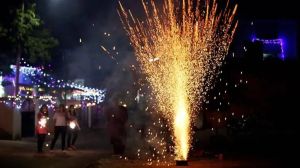CMG has no service chiefs
NEW DELHI, DEC 27: For the past 48 hours the Army and Air Force have been on standby, waiting to be called in to assist in tackling the hi...

NEW DELHI, DEC 27: For the past 48 hours the Army and Air Force have been on standby, waiting to be called in to assist in tackling the hijacking drama even as the government flounders at every step.
As soon as information about the hijacked IA aircraft landing in Amritsar filtered in, a local army unit was reportedly put on standby. Ironically, none of the three service chiefs are a part of the Crisis Management Group (CMG) and they were neither called nor consulted. “When a crisis of this magnitude struck, neither General V P Malik nor his naval (Admiral S Kumar) and Air Force (Air Chief Marshal A Y Tipnis) counterparts were called. This when the Army had on its own alerted its local unit and Air Force fighter jets were ready to scramble,” sources said.
The CMG kept floundering, not knowing how to deal with the situation as “none there were willing to stick their necks out to take a hard decision.” A senior services official said that in such situations the initiative had to be retained and thelocal Army unit would have simply shot at the tyres of the aircraft, thus retaining the initiative for all time to come.
“This is not conjecture but laid-out procedure. We may have had casualties even then but at least we would have been negotiating from a position of strength rather than letting that opportunity fritter away to Lahore, Dubai and Kandahar. The passengers are now exposed to more danger and the centre can only beg for help from all quarters,” he added.
But, even in this situation, till date the CMG has not sought assistance or advice from the three services. “The Army is the first to be called in when there are floods and even during civil disorders. But when there is a crisis like this the armed forces are ignored. The centre’s not consulting the armed forces in such matters, where valuable assistance and suggestions can be made, is unfortunate.
`Plane’s auxiliary power unit has broken down
‘Unconfirmed agency reports said the auxiliary power unit in the hijacked IndianAirlines aircraft had broken down. The breakdown of the APU will magnify the troubles for the hijacked passengers if external power is not provided to the plane immediately.
“The APU is a small jet engine located near the tail on top of the fuselage of the aircraft. It provides power to the air conditioners, radio set, air purifier and lights inside the aircraft. It even gives air to start the turbines of the jet engine,” an IA pilot said. The breakdown of the APU spells trouble for the pilot, crew and all the passengers especially if external power supply is not made available.
“When the aircraft is stationary, it is too expensive to keep the engines switched on since it would consume too much power. Therefore there is this additional small jet engine which consumes very little fuel and can go on for more than 24 hours. All lights and comforts are provided through this engine,” he added. If this is not working then even the pilots cannot speak to the Air Traffic Controller (ATC) as the radio set getsout of control.
“But the main problem would be for the passengers since they are in minus 10 degrees celsius temperatures. The air conditioners and lights will go off if there is no external source of power,” he said.



- 01
- 02
- 03
- 04
- 05




























